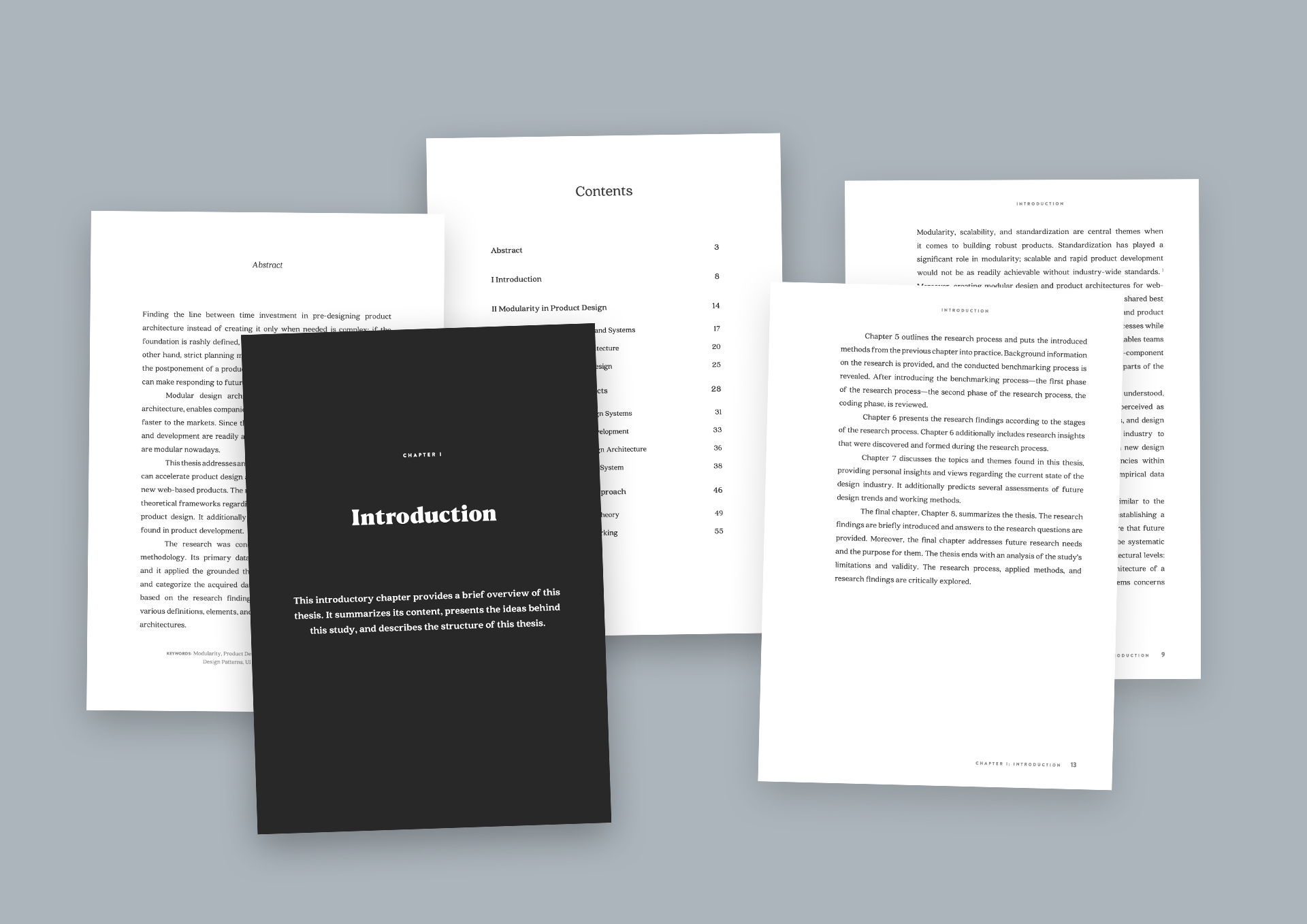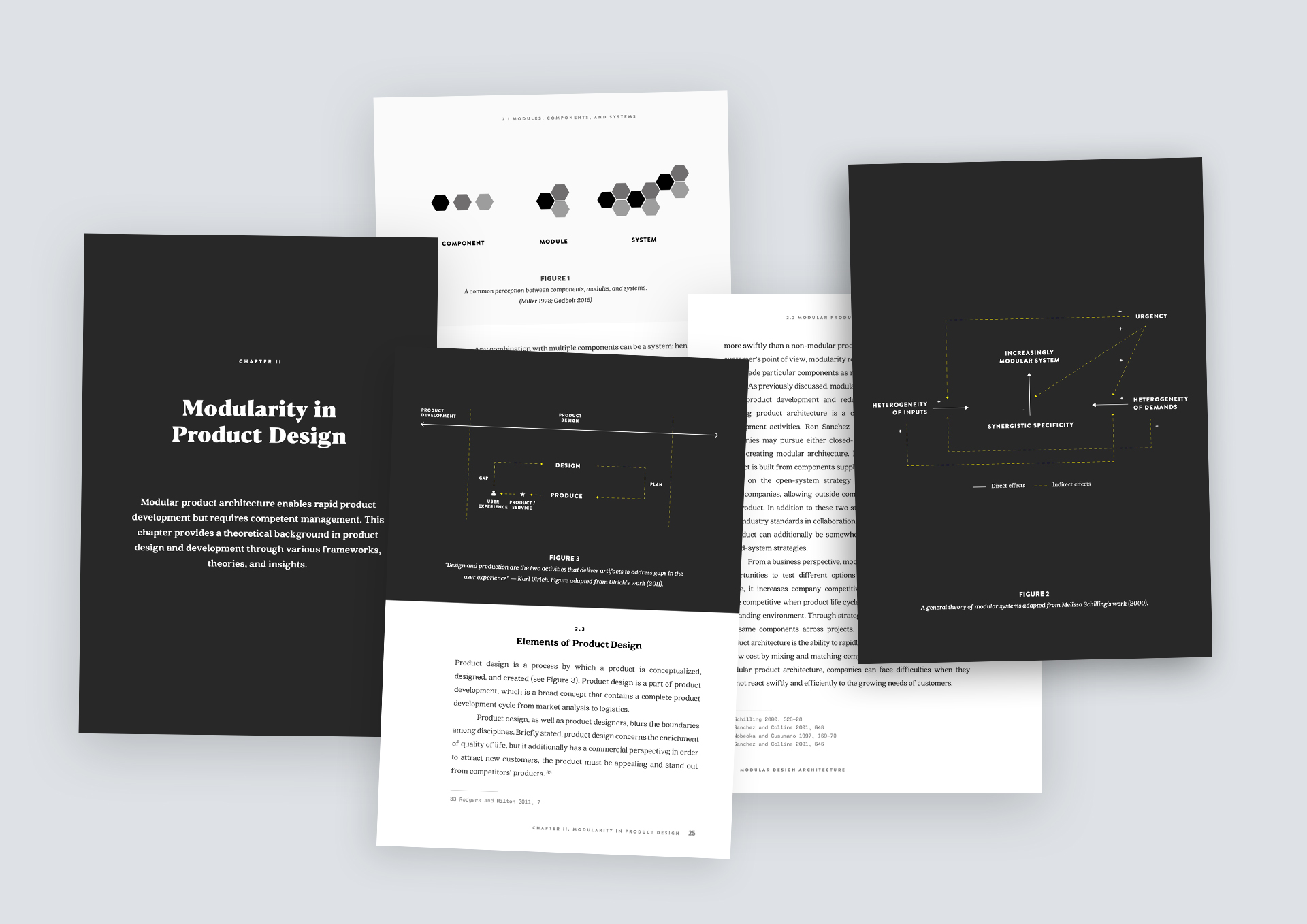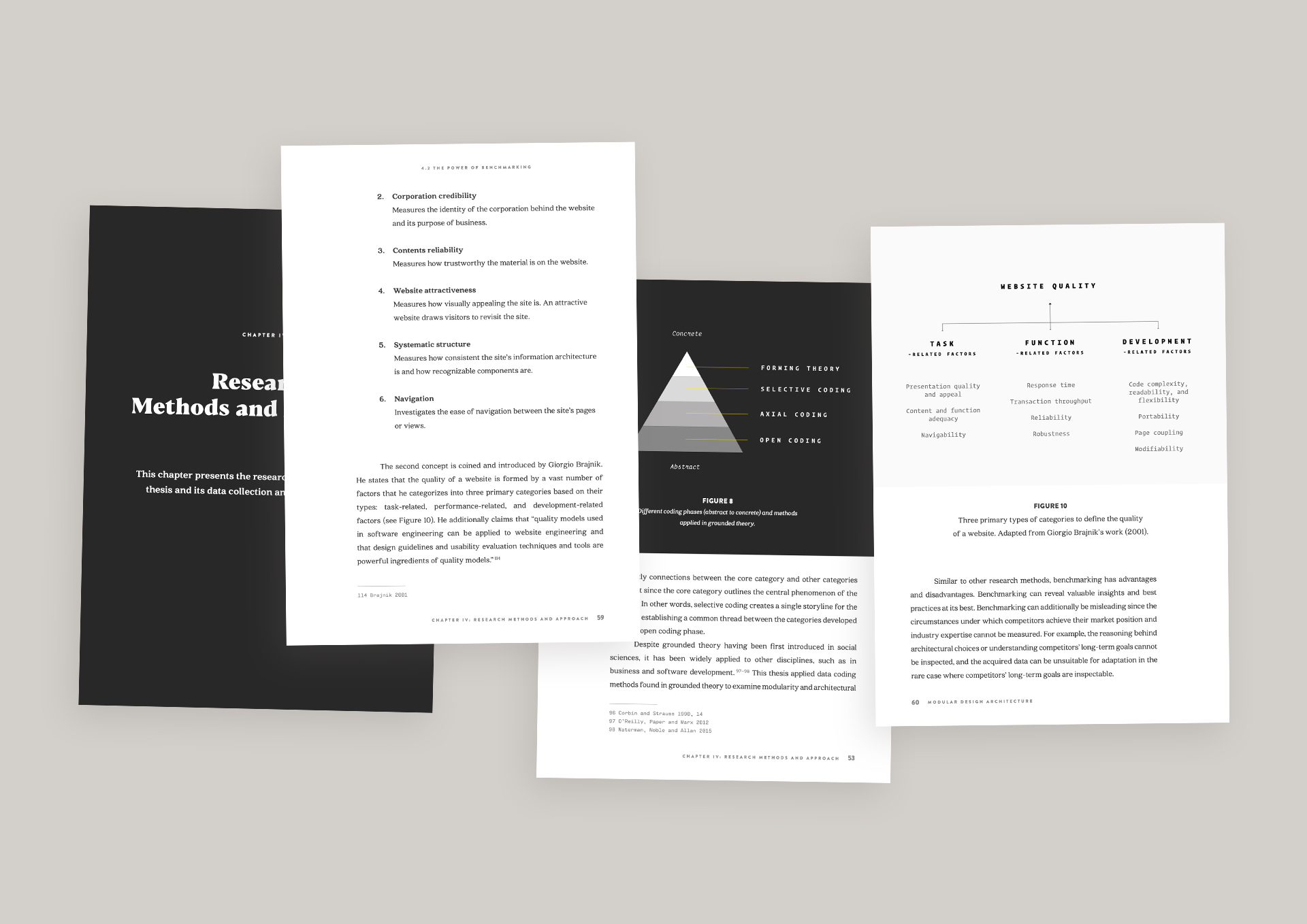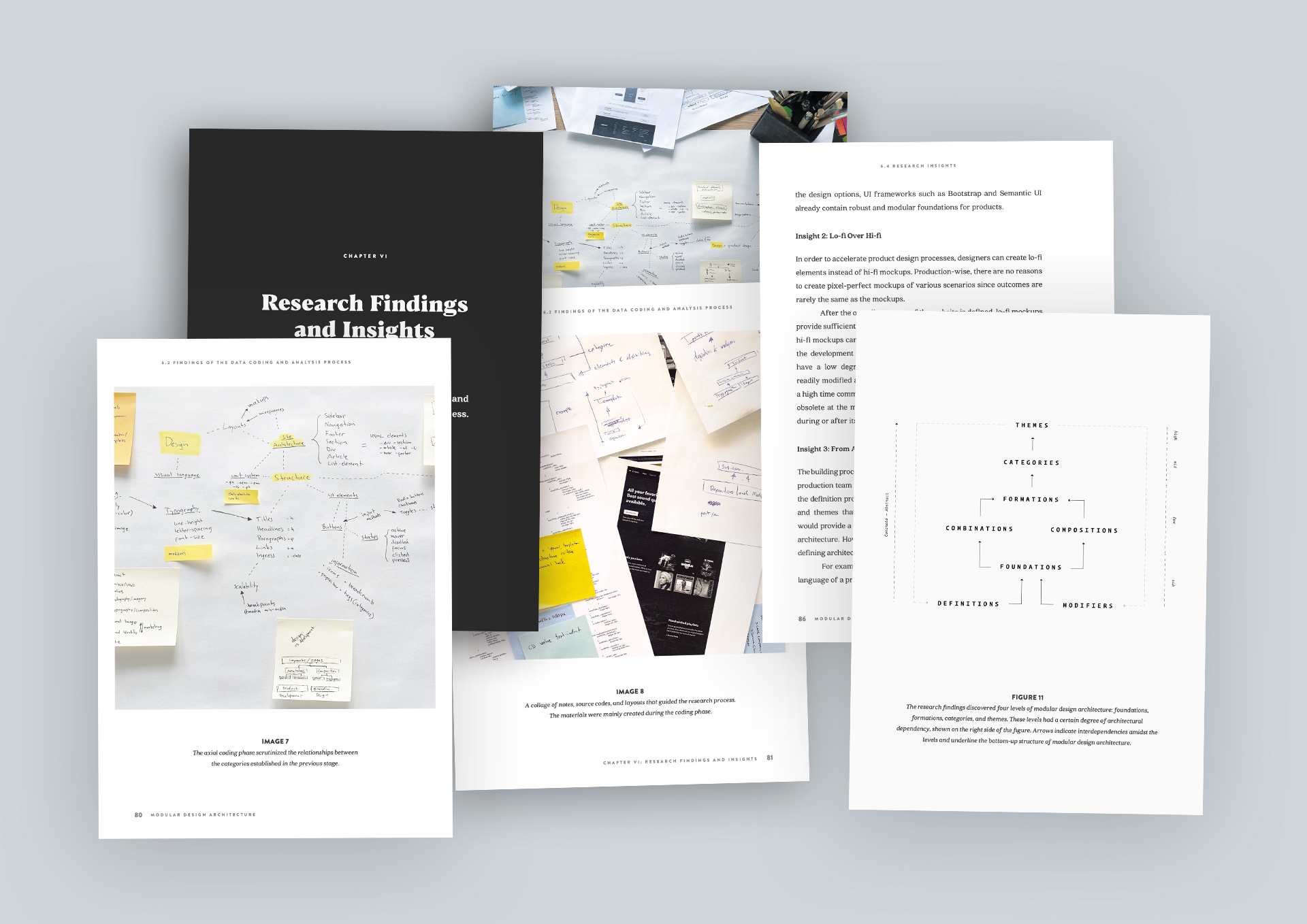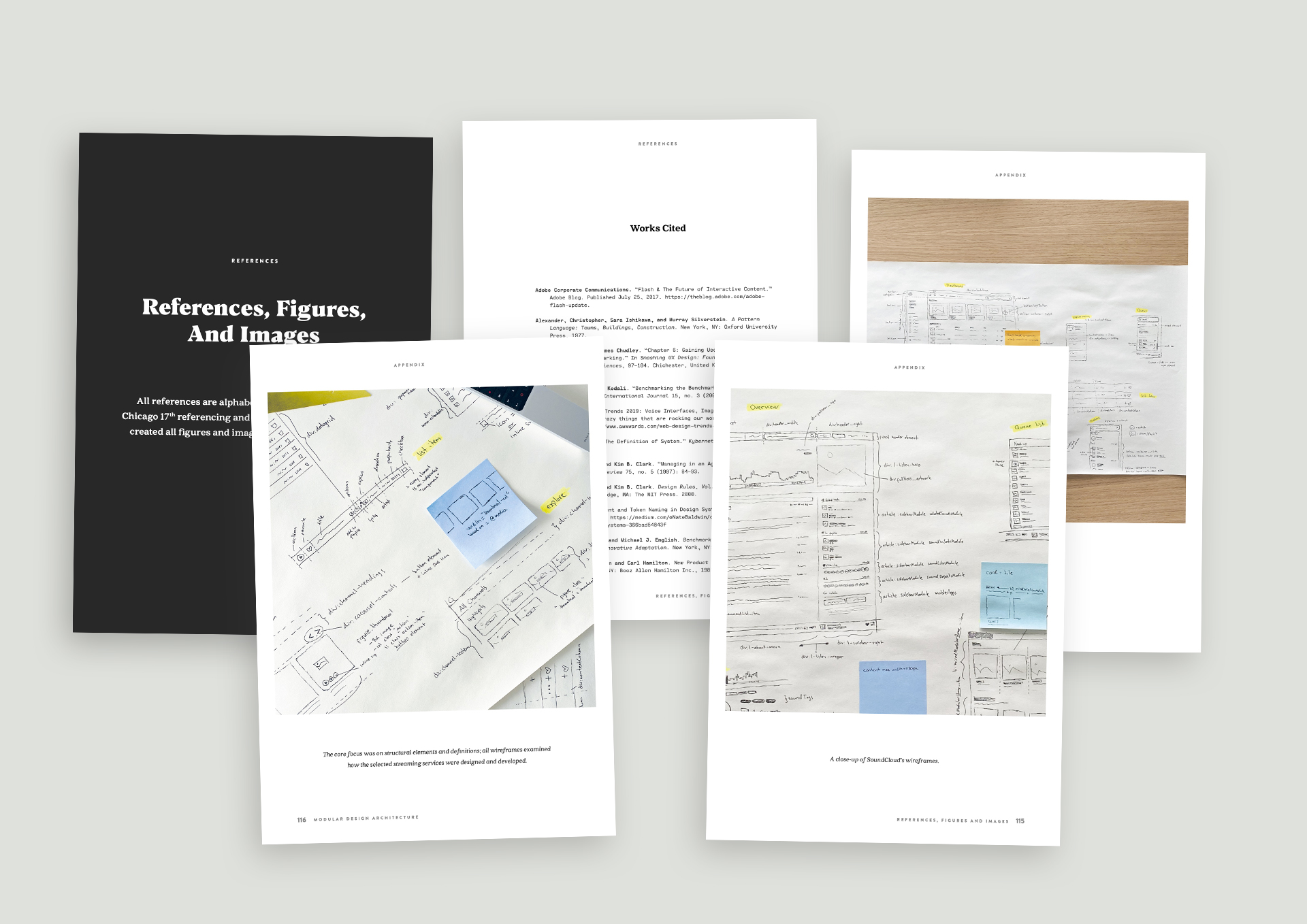- Concept Design
- Research and Development
- Print Design
Modular design architecture, together with modular product architecture, enables companies to design, iterate, and push their products faster to the markets. Since the building blocks for agile product design and development are readily available, approximately all robust products are modular nowadays.
Finding the line between time investment in pre-designing product architecture instead of creating it only when needed is complex; if the foundation is rashly defined, it results in a high chance of failure. On the other hand, strict planning means time away from production, and thus, the postponement of a product launch. Moreover, a restricted foundation can make responding to future changes challenging.
This thesis addresses and inspects how modular design architecture can accelerate product design and development processes when creating new web-based products. The researched literature presents insights and theoretical frameworks regarding modularity, software development, and product design. It additionally addresses teamwork and best practices found in product development. The research was conducted based on the grounded theory methodology. Its primary data collection method was benchmarking, and it applied the grounded theory data coding methods to scrutinize and categorize the acquired data. This thesis coins a novel framework based on the research findings to address interrelationships amidst various definitions, elements, and categories found within modular design architectures.
